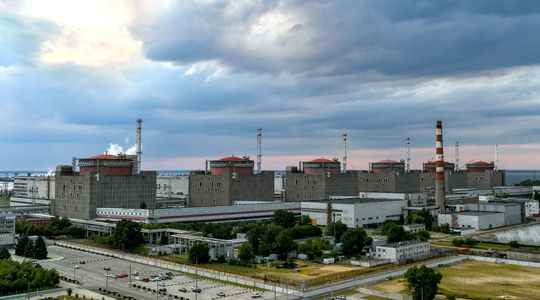On Saturday and Sunday, the Zaporijia power station in Ukraine, currently occupied by the Russian army, was the subject of numerous bombardments. The strikes, of which Moscow and kyiv accuse each other, have followed one another since August in this area close to the front line. But this time, the bombardments fell within a few “meters” of essential installations, according to Rafael Grossi the director general of the International Atomic Energy Agency (IAEA). According to agency experts installed on the spot a few months ago, “a good dozen” shots were felt. “Whoever it is, stop this madness! Urged Rafael Grossi. It’s absolutely deliberate, targeted”.
An inventory is scheduled for Monday, November 21. But damage has already been recorded in various places, in particular “where there are fresh and spent fuels”. For L’Express, Karine Herviou, Deputy Director General of the Institute of Radiation Protection and Nuclear Safety (IRSN) analyzes the state of the plant and recalls the dangers in the event of bombardments on essential installations.
L’Express: What is the current state of the plant? Are there any radioactive releases?
Karine Herviou: The six reactors of the plant have been shut down for several weeks in the face of the multiple bombings it faces. The situation is very worrying. This time, the bombardments seem to have struck closer than the previous ones. From the first information, we know that there were several impacts next to reactors 4 and 5, but nothing essential was affected.
No radioactive release has yet been detected. We know this because sensors are placed all around the plant and they show no radioactivity. Radiological conditions are normal at the site. Nevertheless, the IAEA experts were to report this morning on the damage and the consequences of the weekend artillery fire. We will surely know a little more in the next few hours.
As you said, all the reactors on the site have been shut down. What are the risks in the event of a bombardment on the plant’s installations?
Most of the material, or rather the spent fuel, is located in cylindrical concrete buildings. These facilities, of Soviet origin, contain both the reactor core and the spent fuel storage pools. In other words, they house the fuel cooling pools before they can be transported outside the plant.
These concrete buildings therefore protect, up to a certain point, what is most vulnerable at the level of a nuclear power plant. But they were not designed for war, or for bombardments. They were designed against a number of attacks or disasters, including aircraft crashes, but they weren’t originally made for war situations. If shelling were to hit one of these buildings, there are many possible scenarios depending on the magnitude of the impact. One of the most serious being that the core cooling circuit is damaged.
The reactors are shut down, but the plant still needs electricity to cool its fuels. From now on, isn’t the main risk that the bombardments will reach the electrical installations that supply Zaporizhia?
Of course, since the start of the conflict, we have been very attentive to the state of the external central power supplies. This is another risk that can weigh on the Zaporijia power plant, but also the other power plants in Ukraine. Why ? Because the reactor core has to be cooled, although it has been shut down, because some power is still coming out of it. However, to cool this fuel, the plant must run pumps and circulate water, in particular via an electrical network.
In the event of loss of this external power supply due to bombardments, there are generators which can take over for some time. This makes it possible to hold out for ten days at most, but it is not a permanent situation. In this case, the plant must be refueled, or an external power supply line must be repaired as soon as possible. Otherwise it may lead to a serious accident. If you lose all the external power supplies and the internal emergency generators, this leads to a loss of fuel cooling and therefore to its melting. In this case, yes, we would speak of a serious accident.
Does the International Atomic Energy Agency have the power to stop these bombardments?
Technical experts are on site and Rafael Grossi, the director general of the IAEA, is trying to weigh his weight to establish a protection zone around the plant. But everything seems very complicated. Even if the IAEA succeeds in having a plant protection agreement signed, it is not certain that this will be enough. Because if strikes, even at a distance from the power station, damage the electrical network, then there can be consequences. This obviously depends on how the network is built, but an electrical installation located several tens of kilometers away can bring down the system.
Apart from the bombings, are there other threats to the proper functioning of the plant?
We are also very concerned about the personnel of the plant, who, it should not be forgotten, work on the front line. Russian troops are occupying the plant, it is unclear how decisions are made inside, but no doubt under extremely difficult conditions. This also increases the risk of incidents and accidents. The staff does not have the serenity required to operate the plant.
